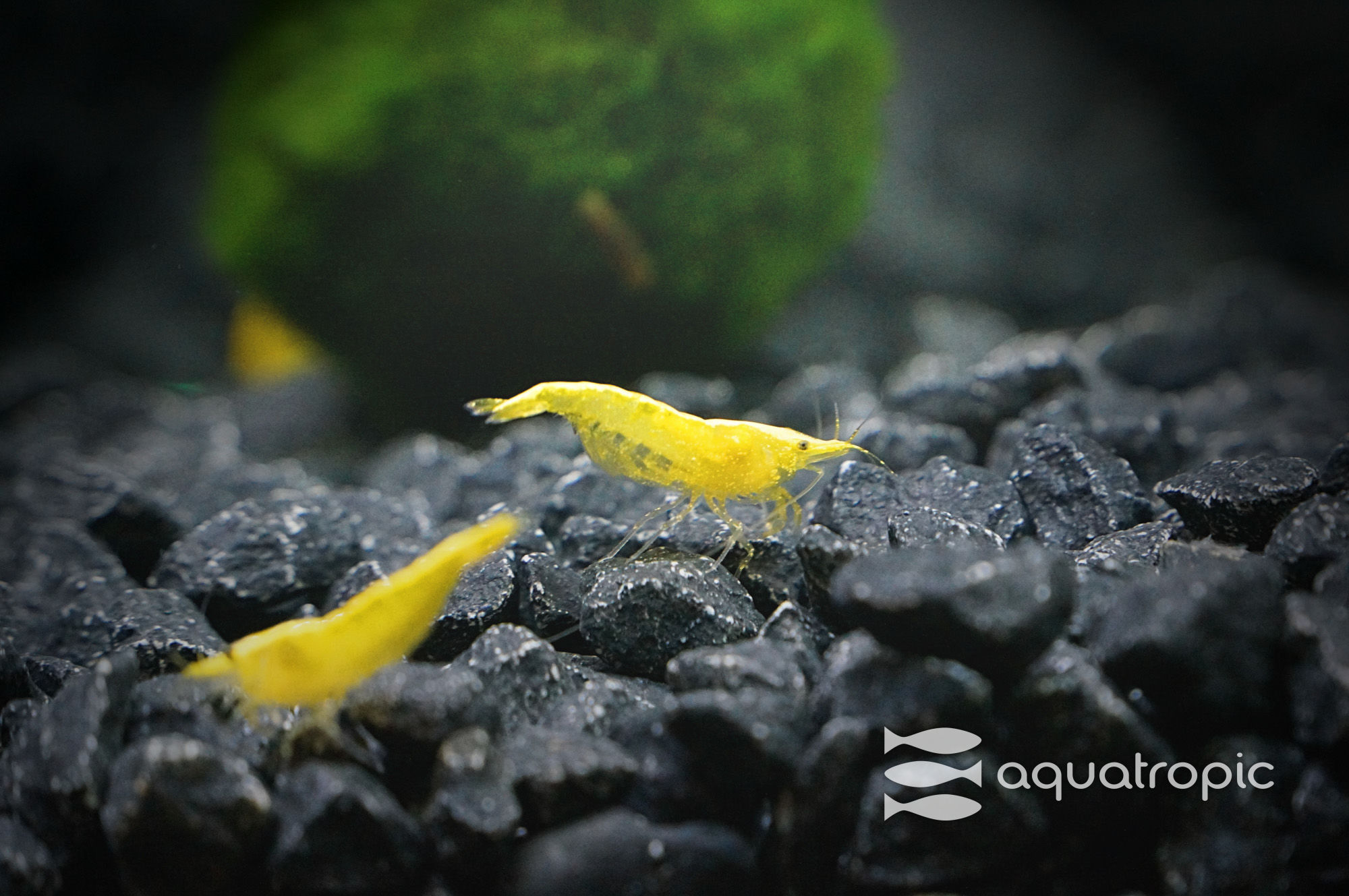Neocaridina davidi

Neocaridina davidi, commonly known as the Dwarf Cherry Shrimp, is a freshwater shrimp first collected in its natural subdued colors in Taiwan in the early 1900’s. These diminutive Decapoda rarely grow to be over 1.5 inches (4 cm) and are now found in a wide array of colors and patterns (morphs) from bright reds to deep violets, black, or even white. The intensity of color and combinations of patterns make N. davidi a small but attractive option for nano aquariums or as a magnificent display of color in larger size tank setups.
N. davidi prefer a temperature range between 68 – 78 °F (20 - 25 °C) but can survive with a range between 57 – 84 °F (14 – 29 °C); they do best with a pH range of 6.5 – 8 and a KH of 3 - 10. Since shrimp absorb calcium from the water column as they grow and develop new shells, keeping the pH stabilized and buffered will be important to help your shrimp molt and continue to grow. When choosing your hardscape materials make sure any rocks do not contain heavy metals such as copper or nickel as these are fatal to invertebrates. It is also important to carefully read the ingredients of any medication or supplements you plan to use on your shrimp tank to ensure no harm comes to your invertebrates.
Shrimp are general scavengers and will eat just about any fish-food you provide in addition to algae and blanched vegetables. A healthy colony can act as a “clean-up crew” in you tank by eating dead fish, shrimp, dying leaves, and biofilm (an organic material consisting of a thin layer of microorganisms). Aquatic mosses of all kinds make for fantastic shrimp havens, providing both food and shelter to keep your shrimp colony population healthy and growing. The scraggly tangled network of moss fronds form passageways through the vegetation, keeping the shrimp safe from predation or being sucked up by filter intakes. Other plant species that make for great colony condos include any grass or reed-like carpeting species, such as micro sword (Lilaeopsis mauritiana), hairgrasses (eleocharis sp.), and cryptocryne species just to name a few.

Prospective tank mates for Neocaridina are other invertebrate species with similar water requirements such as snails, dwarf crayfish, and other types of shrimp. Housing these dwarf shrimp with fish can be done successfully, but there is little stopping any fish that can fit a shrimp in its mouth from doing so. Shrimp are near the bottom of the food chain and many fish will make a quick snack of them given the chance. One example of a safer fish option for a shrimp tank is the Otocinclus affinis (Oto Catfish). These little schooling fish are great algae-eaters and unlike its relatives in the Plecostomus family, they do not produce nearly as much waste and are practically shrimp safe.
Breeding Neocaridina davidi can be easily achieved in a well-established aquarium with stable parameters. Once the shrimp reach maturity (starting around 5 months), the females can be identified by their larger, more rounded tail section and a yellowish or greenish patch that develops under the carapace on their back. This triangular shape is referred to as the “saddle” and is the collection of eggs ready to become fertilized. Once mating is completed, the female will deposit her eggs on her swimmerets under her tail for protection. She will keep them clean and well oxygenated for around 10 – 20 days before shaking the freshly hatched shrimplets loose to fend for themselves.